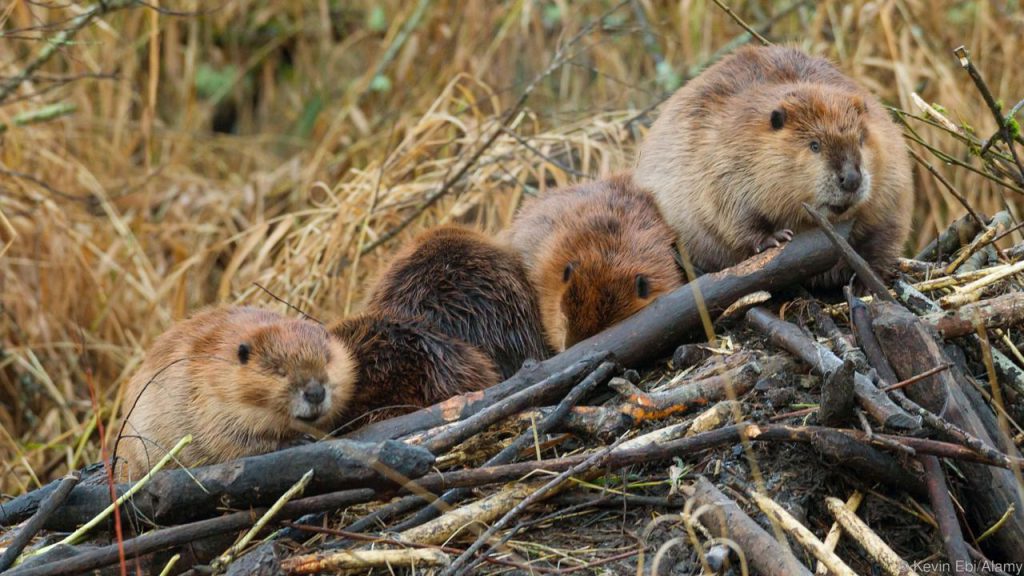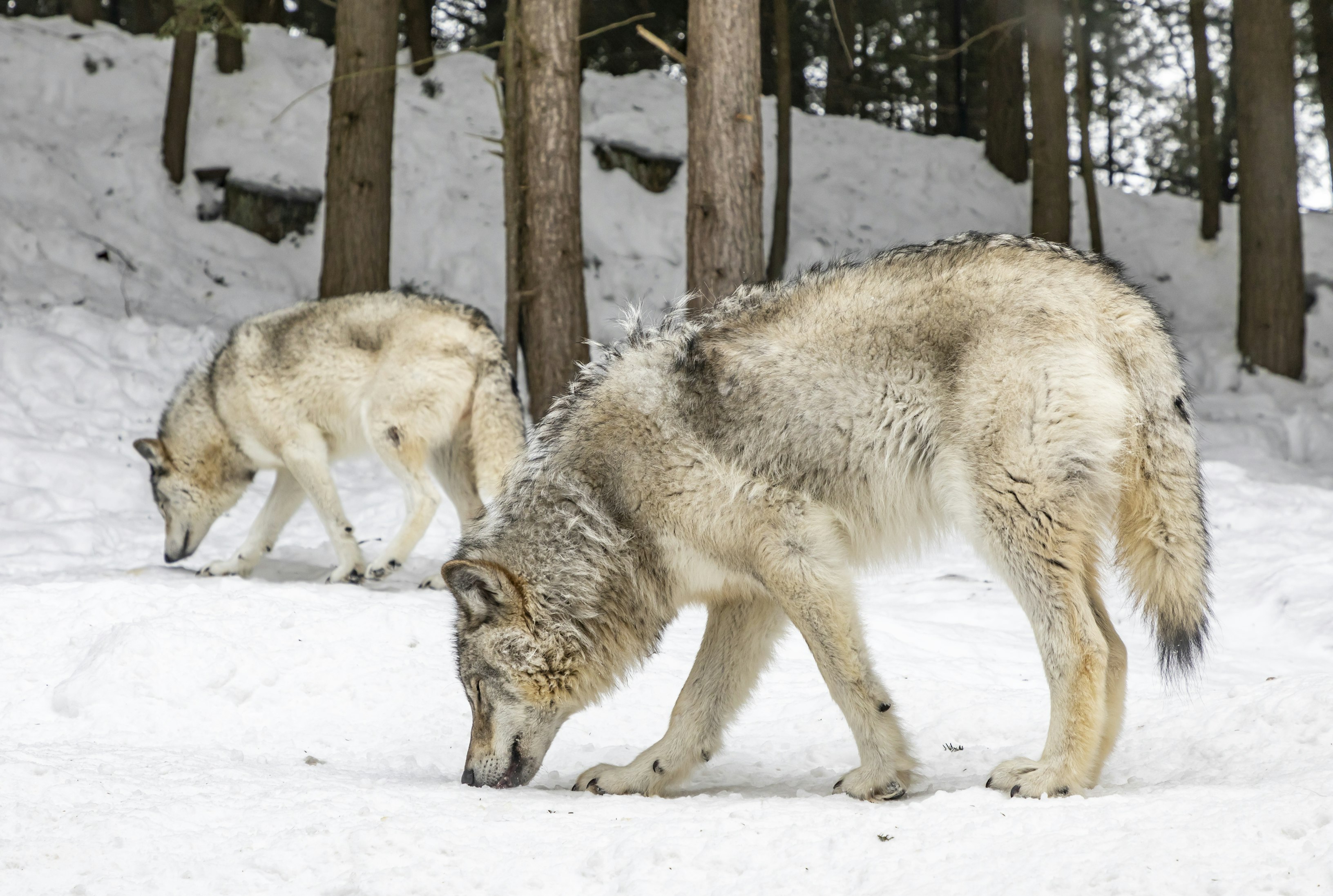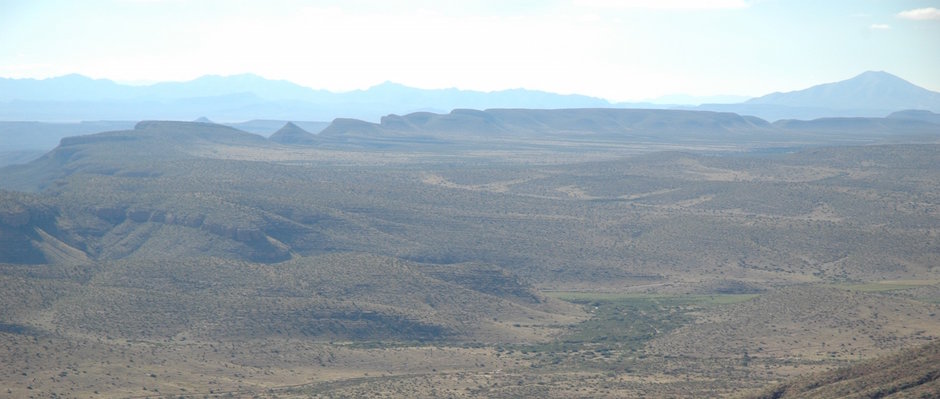Beavers, Rebooted
It is strange but true that as species disappear, the empty spaces they leave behind come to be accepted as ‘natural’. How many times during wildlife reintroductions has the objection been raised that deer, pronghorn, elk, sheep, bison, horses, bear, wolves, – and now beaver – no longer ‘belong’ in our wild places; or that across the Southwest our empty deserts are endangered by a restoration of biodiversity?
NOTE: this article below was featured in the June 2018 edition of ScienceMag.org It was written by Ben Goldfarb
Artificial beaver dams are a hot restoration strategy, but the projects aren’t always welcome.
In 1836, an explorer named Stephen Meek wandered down the piney slopes of Northern California’s Klamath Mountains and ended up here, in the finest fur trapping ground he’d ever encountered. This swampy basin would ultimately become known as the Scott Valley, but Meek’s men named it Beaver Valley after its most salient resource: the rodents whose dams shaped its ponds, marshes, and meadows. Meek’s crew caught 1800 beavers here in 1850 alone, shipping their pelts to Europe to be felted into waterproof hats. More trappers followed, and in 1929 one killed and skinned the valley’s last known beaver.

PHOTO: SARAH KOENIGSBERG; COURTESY OF THE BEAVER BELIEVERS
The massacre spelled disaster not only for the beavers, but also for the Scott River’s salmon, which once sheltered in beaver-built ponds and channels. As old beaver dams collapsed and washed away, wetlands dried up and streams carved into their beds. Gold mining destroyed more habitat. Today, the Scott resembles a postindustrial sacrifice zone, its once lush floodplain buried under heaps of mine tailings. “This is what we call ‘completely hosed,’” sighed Charnna Gilmore, executive director of the Scott River Watershed Council in Etna, California, as she crunched over the rubble on a sweltering June morning last year.
All is not lost, however. Beyond one slag heap, a tributary called Sugar Creek has been transformed into a shimmering pond, broad as several tennis courts and fringed with willow and alder. Gilmore tugged up her shorts and waded into the basin, sandals sinking deep into chocolatey mud. Schools of salmon fry flowed like mercury around her ankles. It was as if she had stepped into a time machine and been transported back to the Scott’s fecund past.
This oasis, Gilmore explained, is the fruit of a seemingly quixotic effort to rebeaver Beaver Valley. At the downstream end of the pond stood the structure that made the resurrection possible: a rodent-human collaboration known as a beaver dam analog (BDA). Human hands felled and peeled Douglas fir logs, pounded them upright into the stream bed, and wove a lattice of willow sticks through the posts. A few beavers that had recently returned to the valley promptly took over, gnawing down nearby trees and reinforcing the dam with branches and mud.

“It’s fantastic to see beavers working on this,” Gilmore said as she bent to examine a chewed stick. “They do a much better job than we do.” The result is a bit too orderly to be a beaver dam, a touch too messy to have been created solely by humans.
Gilmore’s group is just one of many now deploying BDAs, perhaps the fastest-growing stream restoration technique in the U.S. West. Federal agencies such as the U.S. Forest Service, nonprofits such as The Nature Conservancy, and even private ranchers have installed the structures to return life to deeply eroded streams and, in some cases, to help re-establish beavers in long-abandoned territories. In Wyoming, BDAs are creating wet meadows for a vulnerable bird. In Oregon, they’re rebuilding salmon streams. In Utah, they’re helping irrigate pastures for cattle.
Part of the allure is that BDAs are cheap compared with other restoration techniques. “Instead of spending $1 million per stream mile, maybe you spend $10,000,” says Joe Wheaton, a geomorphologist at Utah State University (USU) in Logan who’s among the leading proponents of beaver-based restoration. “Relying on the labor of a rodent helps a ton.”
The BDA craze is experiencing growing pains, however. Regulators unfamiliar with the approach are sometimes skeptical, and some landowners and government agencies are loath to aid a rodent infamous for felling valuable trees, flooding property, and clogging road culverts. Last year alone, the U.S. Department of Agriculture (USDA) killed more than 23,000 beavers deemed to be nuisances.
Beavers might be vaunted ecosystem architects, says Joe Cannon, an ecologist at The Lands Council in Spokane, Washington, a group that has installed BDAs and relocated beavers in the eastern part of that state. “But we’ve got greater protection on tree squirrels.”
FROM OUR 21ST CENTURY vantage, it’s hard to conceive how profoundly beavers shaped the landscape. Indeed, North America might better be termed Beaverland. Surveying the Missouri River Basin in 1805, the explorers Meriwether Lewis and William Clark encountered beaver dams “extending as far up those streams as [we] could discover them.” Scientists calculate that up to 250 million beaver ponds once puddled the continent—impounding enough water to submerge Washington, Oregon, and California. Castor canadensis even paved the way for agriculture: By trapping sediment in their ponds, beavers “produced the rich farm land … of the northern half of North America,” paleontologist Rudolf Ruedemann wrote in Science in 1938.
But Beaverland could not withstand the fur trappers who arrived in New England in the 17th century and quickly spread west. By 1843, naturalist John James Audubon found the Missouri Basin “quite destitute.” At the outset of the 20th century, researchers estimate, just 100,000 beavers survived—less than 1% of historic numbers.
The slaughter transfigured North America’s waterways. In a healthy, beaver-rich creek, dams slow water flows, capture sediment, and counteract erosion. But after beavers and their speed bumps disappeared, streams eroded into their beds, cutting deep gullies in a process called incision. These steep-sided, straitjacketed streams lost the ability to spill onto their floodplains and recharge aquifers. Some groundwater-fed streams dried up altogether.

This tragic history played out along central Oregon’s Bridge Creek, a 45-kilometer-long waterway that is the site of the country’s most extensive BDA experiment. In the 1820s, U.K. operatives deliberately exterminated the region’s beavers to dissuade U.S. trappers from invading the Oregon Territory, which was claimed at the time by both the United Kingdom and the United States. The gambit failed, but the beavers’ destruction, combined with unchecked cattle grazing, left an enduring legacy. Bridge Creek devolved into a narrow trench bordered by desiccated pastures. “It was kind of a godforsaken place,” says Michael Pollock, an ecosystems analyst with the National Oceanic and Atmospheric Administration’s Northwest Fisheries Science Center in Seattle, Washington.
Despite its grim appearance, Bridge Creek wasn’t barren. The stream hosted a lingering population of endangered steelhead—rainbow trout that, like salmon, migrate to the ocean and back. A skeleton crew of beavers had also survived, although any dams they built across the sluicelike channel tended to wash away. But Pollock, who had studied the connection between beavers and salmon in Alaska, suspected that, if given a chance, the rodents could capture enough sediment to elevate Bridge Creek’s bed, reconnect it with the floodplain, and inundate side channels and backwaters in which juvenile steelhead could thrive. In a 2007 study he found that even relatively short-lived beaver dams trapped significant amounts of sediment.
If a few collapsing dams were good, Pollock figured more stable ones would be better. So he decided to add some beaverlike structures of his own. To many salmon biologists, the experiment seemed the height of insanity: The dams, they warned, would bury key habitat in silt and expose still waters to the sun, making ponds too hot for young fish. “Nobody really understood it,” Pollock recalls with a laugh.
The scheme also posed logistical headaches. How could people, wielding tools instead of teeth, mimic nature’s most talented builders? When Pollock and a colleague, USU ecologist Nick Bouwes, asked firms for artificial beaver dam designs, the prices came back at $50,000 per structure. “I was appalled,” Bouwes remembers. “I’d just gotten done building a log home for that much.”
Bouwes combed the internet and found a thriftier alternative: a hydraulic post pounder, a machine that resembles a cross between a jackhammer and a bazooka. In 2009, the pair used their new toy to build 76 BDAs, fashioned from upright posts with willow branches woven between them, on 3.4 kilometers of Bridge Creek. They added 45 more between 2010 and 2012. “My back still hurts,” Pollock says.
The crew experimented with size and function. Some BDAs were meant to capture sediment, others to widen the channel by redirecting flows. The overarching goal was to convert a drastically simplified stream into a complex one.
Beavers soon lent a paw. “Wherever we put structures, beavers came and set up shop,” recalls Nick Weber, the project’s coordinator who is based in Bend, Oregon. By 2013, beavers had fortified nearly 60 BDAs and built 115 new dams, monitoring studies found. All told, Bridge Creek’s beaver activity increased eightfold. Some dams captured so much sediment that they became interred in muck. And, like a plant seeking sunlight, the stream bed began climbing out of its trench, spilling water onto floodplains. The creek’s submerged area tripled and side channels grew by more than 1200%. “Habitat changes that we thought would take a decade happened in 1 to 3 years,” Bouwes says.
Steelhead soon took advantage. Bridge Creek produced nearly three times more fish than a nearby control stream, and its young steelhead were 52% more likely to survive, the researchers reported in 2016 in Scientific Reports. Other studies found the dams and ponds actually helped blunt water temperature spikes, perhaps by allowing water to percolate underground and cool.
As word spread about Bridge Creek, observers realized BDAs might help more than fish. Jeremy Maestas, an ecologist with USDA’s Natural Resources Conservation Service in Portland, Oregon, visited the site in 2015 and recognized potential benefits for the greater sage grouse, a ground-nesting bird that is the focus of a major conservation effort. It relies on wetlands and wet meadows for summer forage. Maestas became a BDA evangelist, leading workshops across the western United States. “We’re gaining traction all over,” he says.

FOR ALL THAT MOMENTUM, however, BDAs continue to hit snags. Building a structure in a stream typically requires a federal or state permit, but many regulators simply don’t know what to make of structures that are neither natural nor entirely human-built. John Coffman, manager of The Nature Conservancy’s Red Canyon Ranch near Lander, Wyoming, learned that the hard way when he asked to install 10 BDAs along the Little Popo Agie River in 2017. The project stalled for a year after state officials required him to obtain the legal right to use the water that would be stored behind the BDAs—despite the fact that the semipermeable dams were designed only to delay, not stop, the water from flowing downstream to other users. Although Coffman eventually secured his water rights and built his BDAs, the state forbade structures that exceeded the stream’s width or bank height, diminishing their ability to spread water onto the floodplain.
In some places, BDA skepticism has deep historical roots. Some river restoration engineers, for instance, fear the structures are the second coming of the so-called check dams that the U.S. Forest Service once built by the thousands to help curb erosion. Many of the rock dams ended up failing and doing more harm than good by encouraging problematic erosion and littering stream beds with debris.
BDA proponents downplay such concerns. Check dams were intended to be permanent, they note, whereas BDAs are inherently ephemeral. At Bridge Creek, for example, many structures have rapidly fallen into disrepair—which is fine. “It’s not about how long the structures last,” Wheaton says. “It’s about getting beavers back in the system and letting them do the work.”
But he concedes that the chaos beavers breed—dams can flood roads, for instance—is not easily reconciled with civilization. In Utah, regulators have denied permits for BDAs amid fears that the structures would alter streams too radically—which, of course, is the whole point. “Beavers seem like a slam dunk,” says USU geomorphologist Wally Macfarlane, “but we’re getting our shots blocked all the time.”
Beaver skepticism has even undermined the pioneering Bridge Creek experiment. In 2017, the federal Bonneville Power Administration pulled its funding from the project after at least one member of the agency’s council questioned whether documenting “the value of beavers” was worth the cost of monitoring. The move has cast doubt on the future of the site’s research program. “There’s so much about this system we’re just starting to understand,” one researcher laments.
PERHAPS NO PLACE is as ambivalent about beavers as California, where the Department of Fish and Wildlife once claimed—despite ample evidence to the contrary—that the animals were not native to much of the state. Although officials now acknowledge that beavers belong, they’ve been reluctant to encourage an animal notorious for meddling with the irrigation infrastructure that supports California’s agricultural economy. That apprehension has, at times, confounded restoration efforts. In the Scott Valley, for example, the watershed council originally proposed building 36 BDAs, but regulators permitted just six.
Even here, however, the rodent revolution is gaining allies. Last year, state officials showed signs of warming to BDAs after the council invited them to a workshop. And once-suspicious local ranchers have shifted their views, persuaded in part by water tables that have risen by as much as a meter, helping improve water supplies and reduce irrigation costs.
Even 5 years ago, says Gilmore, her colleagues “were like closet beaver people,” so fearful of antibeaver sentiment that they wouldn’t so much as wear T-shirts decorated with the rodent’s portrait. Her group even dubbed BDAs “post-assisted wood structures” to avoid associations with the controversial animal. Today? “We have a lot of landowners that would love for us to put [BDAs] up,” she says. “Now, people see me in town and they’re like: ‘Oh, you’re the beaver gal!’”
-
↵* Ben Goldfarb is a journalist and the author of Eager: The Surprising, Secret Life of Beavers and Why They Matter.



